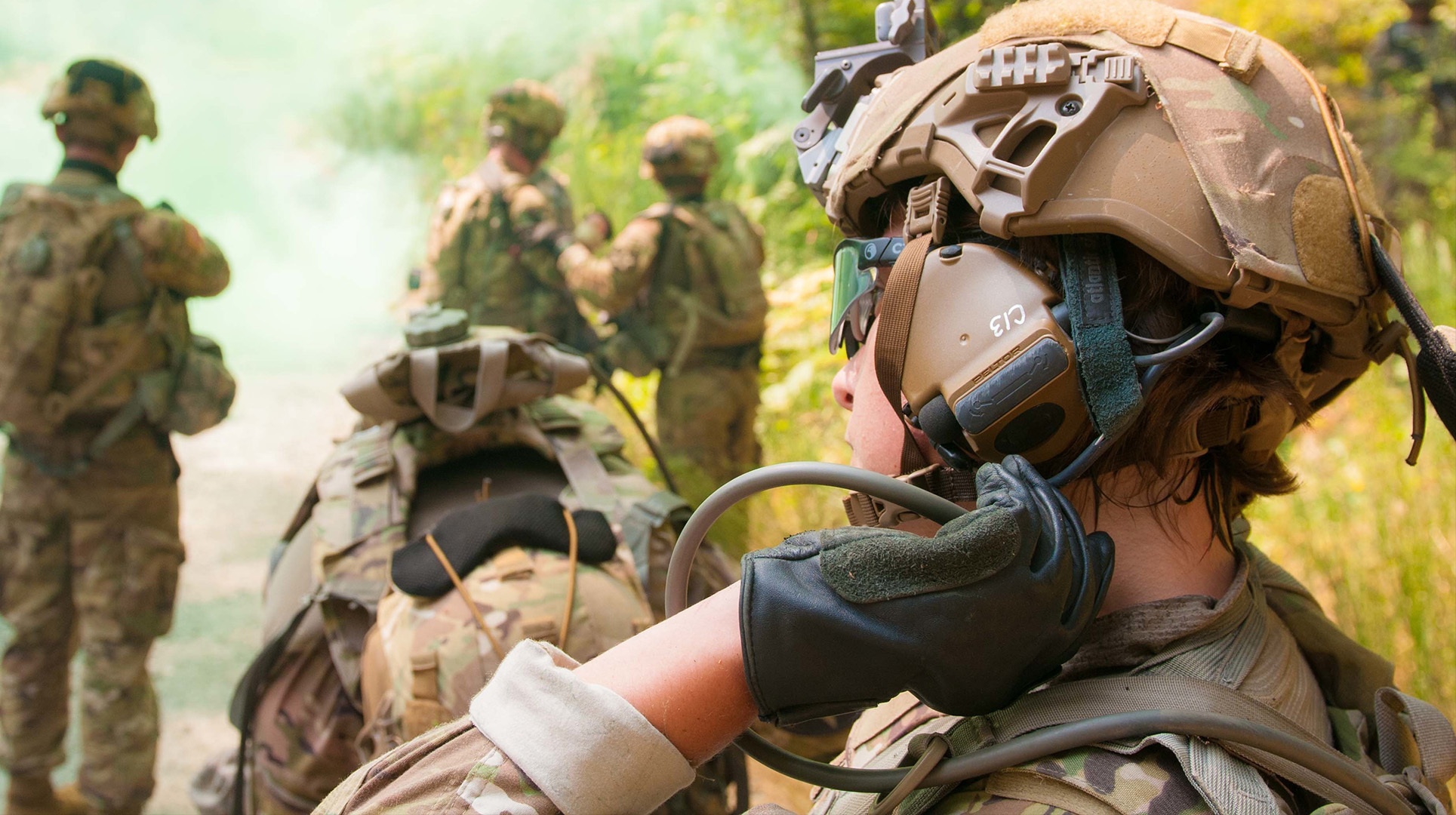

Soldiers in the 82nd Airborne Division became the first in the Army this week to officially receive the Army’s latest combat helmet. Around 2,000 Soldiers from the 82nd’s 1st Brigade Combat Team received the Next Generation Integrated Head Protection System, or NG-IHPS. Another 2,000 soldiers are set to receive their helmets next week, and another 2,000 the following week.
The plan is to equip the 2nd and 3rd Brigades this fiscal quarter and all close-combat units across the Army over the next three years, Army officials said.
The NG-IHPS is an improved version of an IHPS helmet that has been fielded in limited numbers for several years, but is a major step-up from the Advanced Combat Helmet, or ACH, that most soldiers have been issued over the last two decades.
The NG-IHPS gives soldiers “increased ballistic and fragmentation protection while reducing the weight required to previously reach this protection level by 40%,” according to Maj. Matthew Nulk, assistant program manager of the Head Protection Team. The newest version has slightly upgraded polyethylene and no through-holes which give better protection and catching capability of ballistic rounds.
Previous helmets made of aramid, or kevlar, were “a rigid material that would kind of destroy itself and stop the bullet,” Nulk said. “Whereas this polyethylene material is more along the lines of a catcher’s mitt, and the way it’ll catch a bullet so it attenuates that energy over a wider area than that aramid does.”
The NG-IHPS improves on previous helmets like the Advanced Combat Helmet, fielded in 2003 which was rated to protect wearers from pistol fire and fragmentation. The first iteration of the IHPS offered protection from small arms fire while the new version that was fielded this week improves on that protection.
The NG-IHPS ranges from 2.92 to 3.92 pounds across five sizes, small through double XL, said Alex de Groot, lead engineer for the Head Protection Team.
As close combat forces receive the newest version of IHPS, other Army units that face less battlefield risks will get the first generation IHPS. The helmet will also be bought by sustainment partners and the Defense Logistics Agency as a stockable item for replacement. The Army’s remaining Advanced Combat Helmets will go to units and MOSs that generally do not operate in high-hazard areas.
“We had 15-plus years of an ACH that was the primary helmet for all of the force and is still around. There’s a lot of change happening fast and really our mindset in our protection space is that we’re keeping an eye on the threats on the battlefield and with what is technologically feasible,” Elgort said. “We’ll adjust for that but we’re also listening to soldiers’ comments.”
The new helmet is part of a soldier’s protection system which has been in development since 2017. The system includes upgrades to the modular anti-ballistic vest, ballistic fragmentation and flame-resistant shirt, the Blast Pelvic Protector for pelvic and femoral artery protection and body armor plates.
Some of the feedback from soldiers has focused on the helmet’s pads being too stiff inside. The Program Executive Office Soldier is now working through options with private companies to develop more comfortable options for the soldiers with hopes to put those into production in early 2025, Nulk said.
Subscribe to Task & Purpose today. Get the latest military news and culture in your inbox daily.
“They are protecting at a very high level of blunt impact and not all use cases require that level of protection at all times and some of the less risky environments,” said Lt. Col. Ken Elgort, product manager for Soldier Protective Equipment. “Senior leaders and Army commanders can have them wear their comfort pads and it may be a little more comfortable for the soldier when the risk isn’t as high.”
They’re also working on more integrated communication headsets in the coming years, he added.
The NG-IHPS has retention and suspension systems, a helmet cover and can be modified with hearing protection, communication devices or a mandible protector which is fielded to 6% of the force in a mounted configuration.The helmet was designed to be integrated with the Army’s next-gen night vision devices like the fraught Integrated Visual Augmentation System, or IVAS and the Enhanced Night Vision Goggle-Binocular.
The original IHPS program kicked off in 2013 and PEO Soldier started working on new material development for the NG-IHPS in 2016-2017. In 2019 they started developmental contracts with vendors.
That year, Army equipment officials “quietly fielded” 150 of the next-gen IHPS helmets to soldiers at Fort Riley, Kansas along with the first issue of the Enhanced Night Vision Goggle-Binoculars.
The helmet’s development began as early as 2013 when Gentex Corporation was awarded a $1.3 million contract for Phase 1 development testing.
PEO Soldier urged troops with new protection equipment to submit feedback on the PEO Soldier website.
According to PEO Soldier, the fielding plan is as follows:
- February-March: 1st, 2nd and 3rd Brigade Combat Teams, 82nd Airborne Division, followed by 2nd Security Force Assistance Brigade at Fort Liberty, North Carolina.
- Third Quarter Fiscal 2024: 1st, 2nd, 3rd Brigade Combat Teams, 101st Airborne Division at Fort Campbell, Kentucky.
- Late summer: 3rd Security Force Assistance Brigade at Fort Cavazos, Texas, followed by 2nd Brigade Combat Team, 10th Mountain Division at Fort Drum, New York.
- Fourth Quarter Fiscal 2024: 4th Security Force Assistance Brigade at Fort Carson, Colorado; 5th Security Force Assistance Brigade at Joint Base Lewis-McChord, Washington.
- Fiscal 2025: 173rd Airborne Brigade in Vicenza, Italy; 2nd Cavalry Regiment in Vilseck, Germany; 1st Brigade, 11th Airborne Division at Fort Wainwright, Alaska.
The latest on Task & Purpose
- Army officer gets reprimand for secret camera in dressing room
- Two Army Rangers made the bracelet Taylor Swift wore at AFC Championship game
- 5 Marines who died in CH-53E helicopter crash identified
- Police find rocket from nuclear missile in Washington home
- Army orders hundreds of counter-drone Coyote munitions amid attacks on US bases